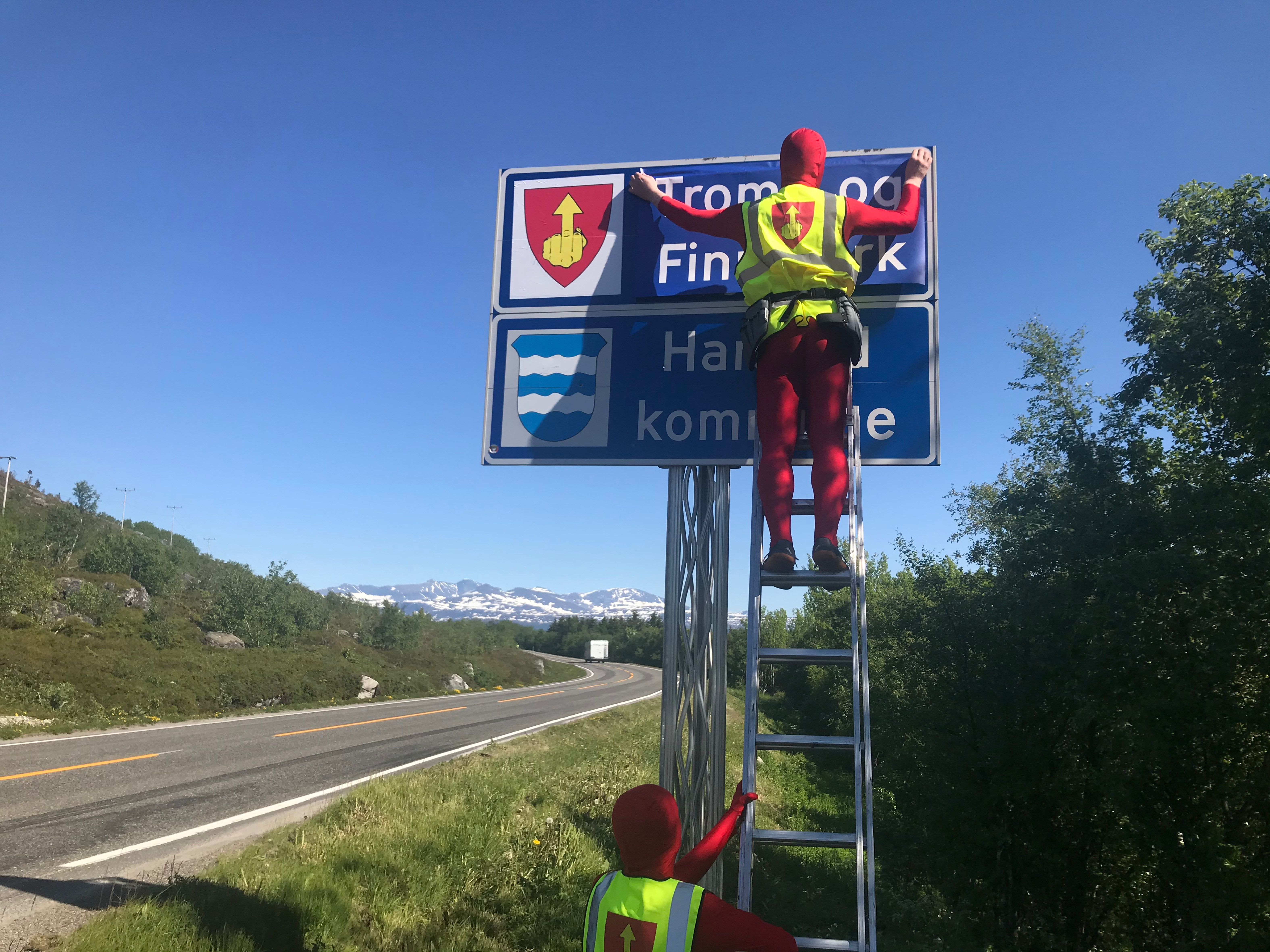Northern Genealogies in ‘The Snow Queen’ and Frozen
DOI:
https://doi.org/10.7557/13.5478Keywords:
The Snow Queen, Sneedronningen, H. C. Andersen, Frozen, Genealogy, Northerness, Arctic literatureAbstract
H. C. Andersen’s ‘The Snow Queen’ (1844) and its self-professed adaptation Frozen (2013) both maintain a combined focus on origins and development. I approach the two texts as narratives that explain aspects of human life by showing how they came into being – as accounts that, although not primarily historical, are still bound up with genealogical ways of thinking: how, and from what beginnings, do humans and their communities evolve? What happens in the transition from non-existence to being? In both texts, the northern setting is a requisite part of these narratives of development – in the dual sense of growth and emergence. In this article, I describe the interaction between the texts’ genealogical discourses and their northern settings. I also discuss how the two texts reflect and rephrase current and past discourses where northerness is associated with genealogical issues.
References
Andersen, Hans Christian. 2007 [1844]. ‘The Snow Queen’. In The Annotated Hans Christian Andersen, ed. by Maria Tatar, trans. by Maria Tatar and Julie K. Allen. New York: Norton.
Augustine. 1953 [ca. 400]. Letters, trans. by Wilfrid Parsons, vol. 3. Washington, D. C.: The Catholic University of America Press (= The Fathers of the Church: A New Translation, v. 20).
Bevir, Mark. 2008. ‘What is Genealogy?’ Journal of the Philosophy of History 2: 263–275. https://doi.org/10.1163/187226308X335958
Bunch, Ryan. 2017. ‘“Love Is an Open Door”: Revising and Repeating Disney’s Musical Tropes in Frozen’. In Contemporary Musical Film, ed. by Kevin J. Donnelly and Beth Carroll, 89–104. Edinburgh: Edinburgh University Press.
Cairns, Douglas L. 2002 [1993]. Aidôs. The Psychology and Ethics of Honour and Shame in Ancient Greek Literature. Oxford: Clarendon Press.
Christensen, Erik M. 2000. Een på brillen. In Det (h)vide spejl. Analyser af H. C. Andersens ‘Sneedronningen’, ed. by Finn Barlby, 35–53. Copenhagen: Dråben.
Conrad, JoAnn. 2018. ‘Into the “Land of Snow and Ice”: Racial Fantasies in the Fairy-Tale Landscapes of the North’. Narrative Culture 5(2): 255–290. https://doi.org/10.13110/narrcult.5.2.0255
Coogan, Michael D. (ed.) 2018. The New Oxford Annotated Bible. Oxford: Oxford University Press.
Crosby, Sarah Chase. 2016. ‘Letting Gendered Spaces Go: Striving toward Gender and Nature Balance through Bonding in Disney’s Frozen and Maleficent’. Master’s thesis, Iowa State University. https://lib.dr.iastate.edu/etd/15162
de Mylius, Johan. 2000. Forvandlingens billeder. In Det (h)vide spejl. Analyser af H. C. Andersens ‘Sneedronningen’, ed. by Finn Barlby, 71–88. Copenhagen: Dråben.
Del Vecho, Peter (Producer), Buck, Chris, and¬¬ Lee, Jennifer. (Directors). 2014 [2013]. Frozen (Animated motion picture, DVD edition). [s.l.]: Walt Disney Pictures/Buena Vista Home Entertainment.
Dvergsdal, Alvhild. 1988. H. C. Andersen: ‘Sneedronningen’ – et eventyr for voksne. Norskrift 58, 12–34.
Epictetus 1959 [ca. 100]. The Discourses as Reported by Arrian, the Manual, and Fragments, trans. by William Abbott Oldfather, vol. 2. London and Cambridge, MA.: Harvard University Press/Loeb Classical Library.
Foucault, Michel. 1984 [1971]. ‘Nietzsche, Genealogy, History’. In The Foucault Reader, ed. by Paul Rabinow, 76–100. New York: Pantheon Books.
Holmes, Su. 2015. ‘“That Perfect Girl is Gone”: Pro-ana, Anorexia and Frozen (2013) as an “Eating Disorder” Film’. Participations 12(2): 98–120.
Jensen, Johannes V. 1945 [1908–1922]. The Long Journey, trans. by Arthur G. Chater. New York: Knopf.
Lederer, Wolfgang. 1986. The Kiss of the Snow Queen: Hans Christian Andersen and Man’s Redemption by Woman. Berkeley, Los Angeles, and London: University of California Press.
Lee, Jennifer. 2013. Frozen. Final Shooting Draft. Retrieved 15 November 2019. http://web.archive.org/web/20140123155432/http://waltdisneystudiosawards.com/downloads/frozen-screenplay.pdf
MacNeilage, Peter F. 2008. The Origin of Speech. Oxford: Oxford University Press.
Macaluso, Michael. 2016. ‘The Postfeminist Princess: Public Discourse and Disney’s Curricular Guide to Feminism’. In Disney, Culture and Curriculum, ed. by Jennifer A. Sandlin and Julie C. Garlen, 73–86. New York and London: Routledge. https://doi.org/10.4324/9781315661599
Milton, John. 2007 [1667]. Paradise Lost, ed. by Barbara K. Lewalski. Malden: Blackwell.
Nagel, Brigitte. 1991. Die Welteislehre: Ihre Geschichte und ihre Rolle im ‘Dritten Reich’. Stuttgart: Verlag für Geschichte der Naturwissenschaften und der Technik.
Ordbog over det danske Sprog, s.v. ‘Bedstemoder’. Accessed 15 November, 2019, https://ordnet.dk/ods/ordbog?query=bedstemoder
Rank, Otto. 1993 [1924]. The Trauma of Birth, ed. by E. James Lieberman. New York: Dover.
Resene, Michelle. 2017. ‘From Evil Queen to Disabled Teen: Frozen Introduces Disney's First Disabled Princess’. Disability Studies Quarterly 37(2). http://dx.doi.org/10.18061/dsq.v37i2.5310
Rudloff, Maja. 2016. ‘(Post)feminist Paradoxes: The Sensibilities of Gender Representation in Disney’s Frozen’. Outskirts 35: 1–20.
Schmerheim, Philipp. 2015. ‘Die Eiskönigin (Frozen. USA, Regisseur: Chris Buck und Jennifer Lee, 2013)’. In Lexikon des Kinder- und Jugendfilms im Kino, im Fernsehen und auf Video. Teil 1: Kinder- und Jugendfilme. 47. Ergänzungslieferung, ed. by Horst Schäfer, 1–9. Meitingen: Corian.
Steinhoff, Heike. 2017. ‘“Let It Go”? Re-Inventing the Disney Fairy Tale in Frozen’. In Heroes, Heroines, and Everything in Between: Challenging Gender and Sexuality Stereotypes in Children’s Entertainment Media, ed, by CarrieLynn D. Reinhard and Christopher J. Olson, 159–176. Lanham: Lexington books.
Topsøe-Jensen, Helge. 1971. Buket til Andersen: Bemærkninger til femogtyve Eventyr. København: Gads forlag.
TvTropes. 2019. ‘Frozen’. Accessed 17 November 2019. https://tvtropes.org/pmwiki/pmwiki.php/Disney/Frozen
Wagner, Richard. 2012 [1843]. Der fliegende Holländer. Bilingual edition, trans. by Lionel Salter. Richmond: Overture Publishing.
Weitzman, Erica. 2007. ‘The World in Pieces: Concepts of Anxiety in H. C. Andersen’s “The Snow Queen”’. MLN 122(5): 1105–1123.
Whitfield, Sarah. 2017. ‘Frozen as a Feminist Disney Musical’. In The Disney Musical on Stage and Screen: Critical Approaches from Snow White to Frozen, ed. by George Rodosthenous, 221–238. London: Bloomsbury Methuen.
Yngborn, Katarina. 2010. Auf den Spuren einer ‘Poetik des Weißen’: Funktionalisierung von Weiß in der skandinavischen Literatur der Moderne. Freiburg: Rombach.









